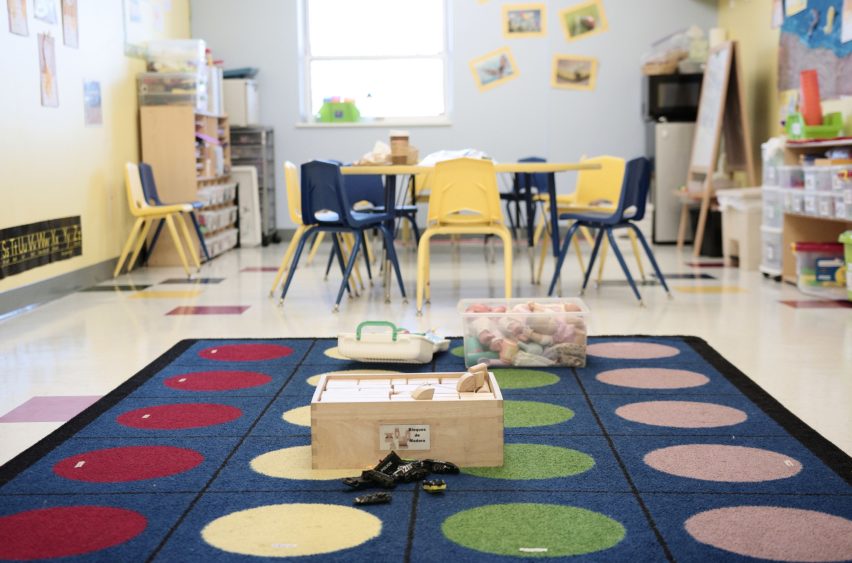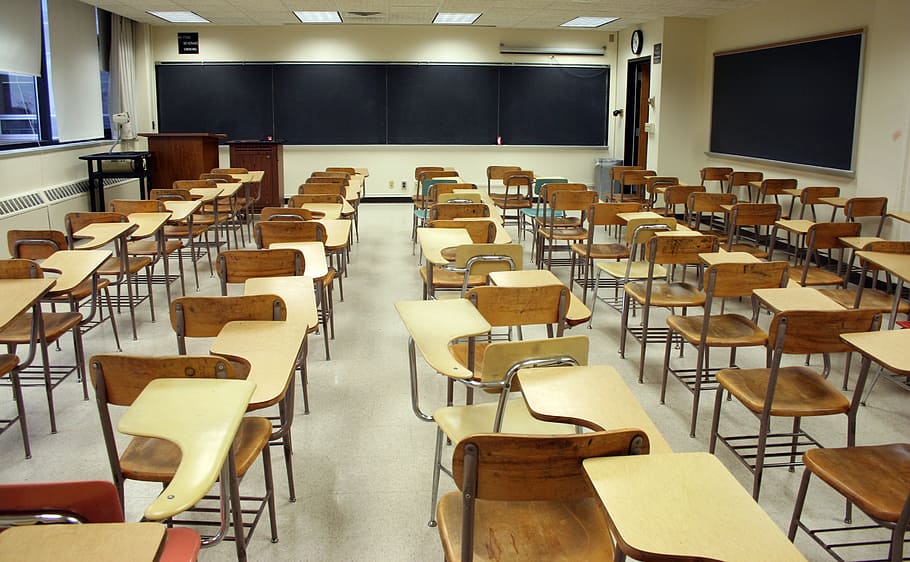California school superintendents are negotiating an obstacle course of regulations, parental angst and safety concerns as they make plans to do something never done before — reopen schools during a pandemic.
School officials are balancing the need to ensure student and teacher safety with the need to offer child care for parents who must work. They are weighing sometimes conflicting guidance from the state, local health departments and education organizations, and trying to appease parents who have differing opinions about whether their children should wear masks or practice social distancing.
Linda Irving, the superintendent of the two-school Sebastopol Union Elementary School District, said:
“I’m in Sonoma County, and I’ve been through fire, floods, evacuations, power safety shutdowns, and this is the most stress I’ve been under, and I have a great team.”
Tweet this!
California school campuses were shut down in mid-March to prevent the spread of COVID-19. Education officials initially thought the shutdown would last only a few weeks, but the order to remain closed continued through the school year as the virus spread.
Districts are starting to finalize reopening plans for the coming school year, but with the uncertainty that comes with virus surges and changing direction from public agencies, many are not approving plans until August.
The most popular model for reopening K-12 schools is a hybrid, or blended, model of instruction, which has students attending some classes on campus and doing some work at home. Almost all also will offer an independent learning model, which allows students to continue full-time distance learning from home if that is what the family prefers.
Natomas Unified, a district of 11,600 students in Sacramento, is planning to give families four choices next school year. Students can attend school on campus five days a week, enroll in independent study courses, continue distance learning from home or attend school on campus part of the week and study from home part of the week. District officials are hoping to limit five-day enrollment to 50 percent of each class, but say they will adjust by adding more teachers or installing clear physical dividers between desks as needed to increase enrollment.

Sebastopol Union Elementary School District, like most districts in the state, is sending questionnaires to families asking which instructional model they would prefer when schools reopen on August 13. It is leaving health guidelines, like whether students should wear a mask or have their temperature checked at school, to county health officials.
A considerable amount of Superintendent Irving’s time and energy in recent weeks has gone to digesting reams of guidance on reopening campuses from the state, county and other agencies that she says provide more questions than answers.
She said:
“It’s difficult to lead when you don’t know where you are going. That has been my motto lately.”
Tweet this!
Natomas Unified parents were so confused about the different guidance being offered that Superintendent Chris Evans took to Facebook to calm nerves after the California Department of Education released its guidance on June 8.
Evans wrote:
“Today there will be a lot of coverage regarding Sup. Tony Thurmond’s CDE guidance. In the past week school districts have received a plethora of guidance including the Sacramento County Planner, a document Friday from the CA Dept Public Health, the Governor’s Friday announcement and now today from CDE. We are sorry for the confusion all of this causes parents and staff. We feel it too. In the end, the majority of the decisions will be local.”
Tweet this!
Evans said the district decided to give parents options to better serve families, but also to keep parents from moving their children out of the district because they wanted other alternatives.
Although Evans expects a final plan for Natomas Unified soon, the district’s teachers’ union says it won’t sign off on a plan that returns students to school five full days a week. The union wants the district to follow hybrid instructional models that have students attending school on campus two days a week or every other week and doing distance learning the other days.
Brenda Borges, president of the Natomas Teachers Association, said:
“Any models are premature right now because things are changing within the week. We are still negotiating.”
Tweet this!
Districts are required to negotiate with teachers’ unions whenever there is a change in working conditions.
School district officials are still making decisions about what safety precautions they will take, including whether they will require students to wear masks in class or have their temperature taken when they enter a campus.
They also are trying to decide what types of personal protective equipment will be required for teachers and other staff, and who will pay for it all. The state says it is providing some safety equipment, but superintendents say it won’t be enough.
Despite the safety protocols being put in place, about 20 percent of families and 36 percent of school staff in Los Angeles Unified are currently opposed to schools reopening this fall for in-person learning, according to survey results released by the district June 29. About 21 percent of families and 20 percent of staff said they are unsure if they will be comfortable with schools reopening in the fall.
The state’s largest school district is scheduled to begin the 2020-21 school year on Aug. 18, but Superintendent Austin Beutner has said repeatedly that he’s not certain school facilities will reopen by that point.
In a televised address, Beutner said:
“No decision has been made yet about a possible return to school facilities, but a great deal of work is being done to make it possible if it appears that’s the best course come August.”
Tweet this!
A quarter of the 32,000 parents who answered a survey in Palo Alto Unified said they don’t want their children on a school campus until there is a vaccine.
Superintendent Don Austin said:
“We need to find a way to serve these students.”
Tweet this!
Palo Alto Unified is among the districts that proposed plans, then later made major revisions after receiving pushback from teachers and parents. In June, Superintendent Austin proposed having elementary school students come to school every day, while middle and high school students could choose whether to take part in a hybrid model of instruction or take classes online.
This week the district released a proposal that would split elementary students into two groups that rotate onto campus a few days a week and take part in distance learning the rest of the week. Parents also would have the option to enroll their children in a full-time distance learning program. Secondary school students would primarily be learning online.
Erin Pauls is conflicted about whether to send her third-grade and seventh-grade children back to Irvine Unified next school year. She’s not sure her youngest child will be able to wear a mask all day. She isn’t sure if all the safety protocols and social distancing will be psychologically harmful to them.
Pauls said:
“My concern is just the unknown, and obviously the mental well-being and physical health of the children.”
Tweet this!
As Oakland Unified prepares to announce its fall reopening plan, some parents who participated in planning committees say the district is not ready to start classes Aug. 10. They are urging delaying the start of school until after Labor Day to give the district more time to prepare. The district is considering an approach that would allow families to choose distance learning for the entire semester or a combination of distance and in-person learning.
But now, with infection and death rates spiking even higher, some wonder if campuses will open for in-person instruction at all.

Earlier this week, the Los Angeles Times reported that Barbara Ferrer, Los Angeles County’s public health director, said that schools may not be able to reopen because of the recent surge in coronavirus cases. She recommended that schools prepare for the possibility of returning to distance learning.
Sherry Martin, superintendent of the one-school Kings River Union Elementary School District in Tulare County, said districts should be flexible about reopening plans. She expects the school year will begin with a hybrid model of instruction, but could move to all distance learning if the rate of coronavirus infection spikes in the winter and could return to in-person instruction again in the spring.
She said:
“We have to learn how to move virtually between all of these models.”
Tweet this!
The district also plans to offer distance learning for any student who is medically fragile or otherwise needs to stay out of school, with the goal of having as many students return to campus as possible.
Martin said the school will hold forums throughout July to gather input from the community before finalizing its plan.
She said:
“It needs to work to keep kids safe and it has to get parents back to work. An all-virtual model is not an option, unless we have an outbreak of the whole area.”
Tweet this!
Students also need to get back to school for their social and emotional welfare, she said. Although counselors have been available to students virtually, Martin said in-person sessions are important. One of the school’s priorities when reopening will be looking for signs of stress in students.
Martin said:
“It’s as critically important as the academic piece.”
Tweet this!
But before that can happen, superintendents and school boards must grapple with a multitude of important details — down to how to ensure social distancing in hallways, during lunch and on school buses.

Washington Unified in Fresno, which provides transportation for 40 percent of its students, decided busing students 12 to 15 at a time to accommodate the need for social distancing would be untenable. Instead they are asking parents to provide transportation for their children.
During a recent interview for Schools on the Frontlines, Hemet Unified Superintendent Christi Barrett said:
“Social distancing is simply not practical in a normal classroom or on a school bus.”
Tweet this!
Barrett added:
“As you mention, when you are transporting students over a 600-plus-mile region, we would be busing students from sun up to sun down if we were to adhere to social distancing.”
Tweet this!
EdSource reporters Ali Tadayon, Theresa Harrington, Michael Burke and Sydney Johnson contributed to this report.
This story was originally published by EdSource.
Bay City News is a 24/7 news service covering the greater Bay Area. © 2022 Bay City News, Inc. All rights reserved. Republication, rebroadcast or redistribution without the express written consent of Bay City News, Inc. is prohibited.
